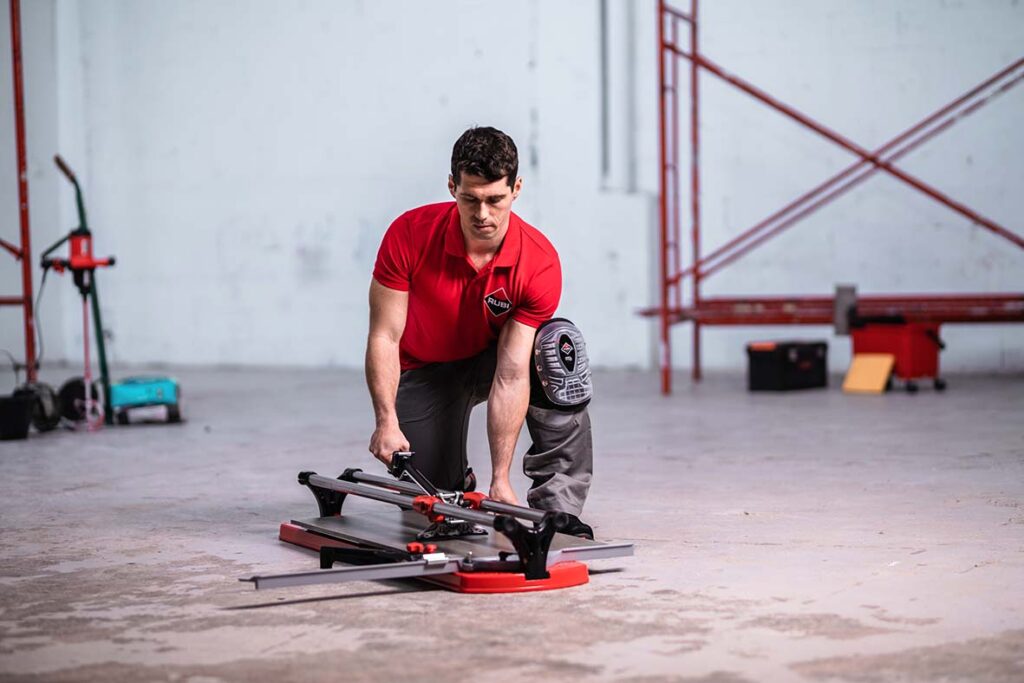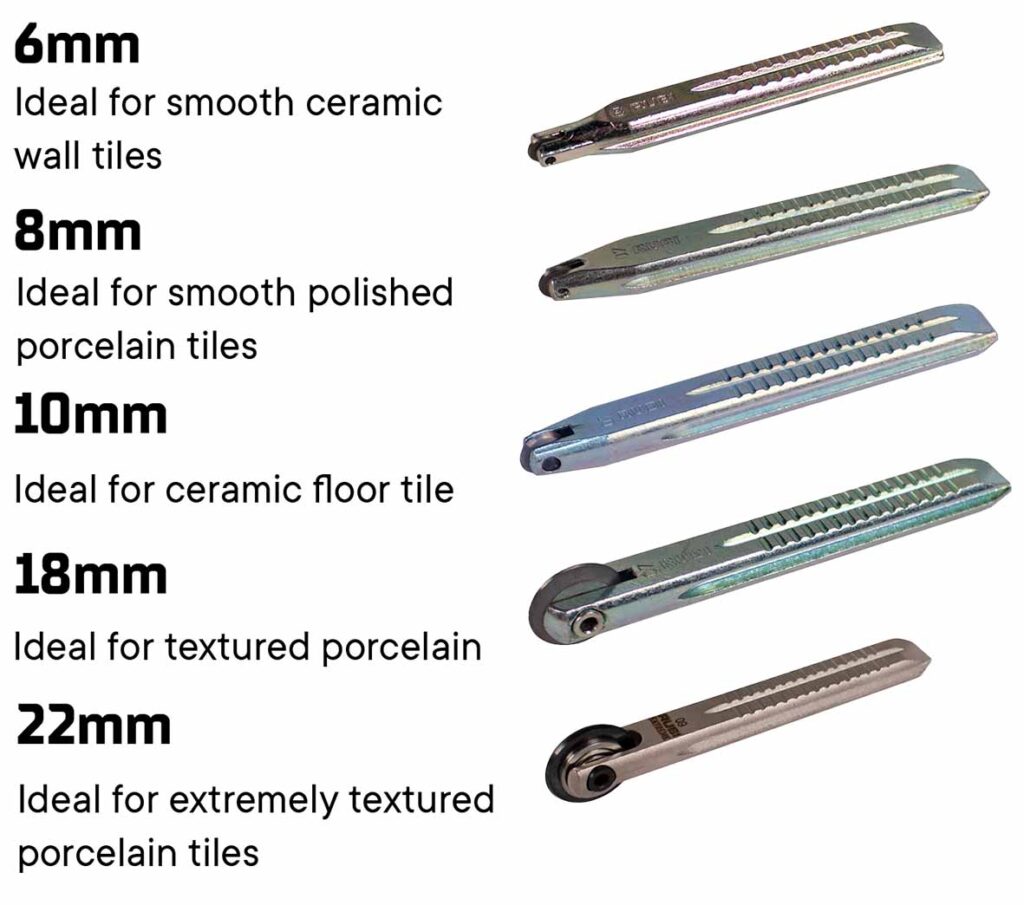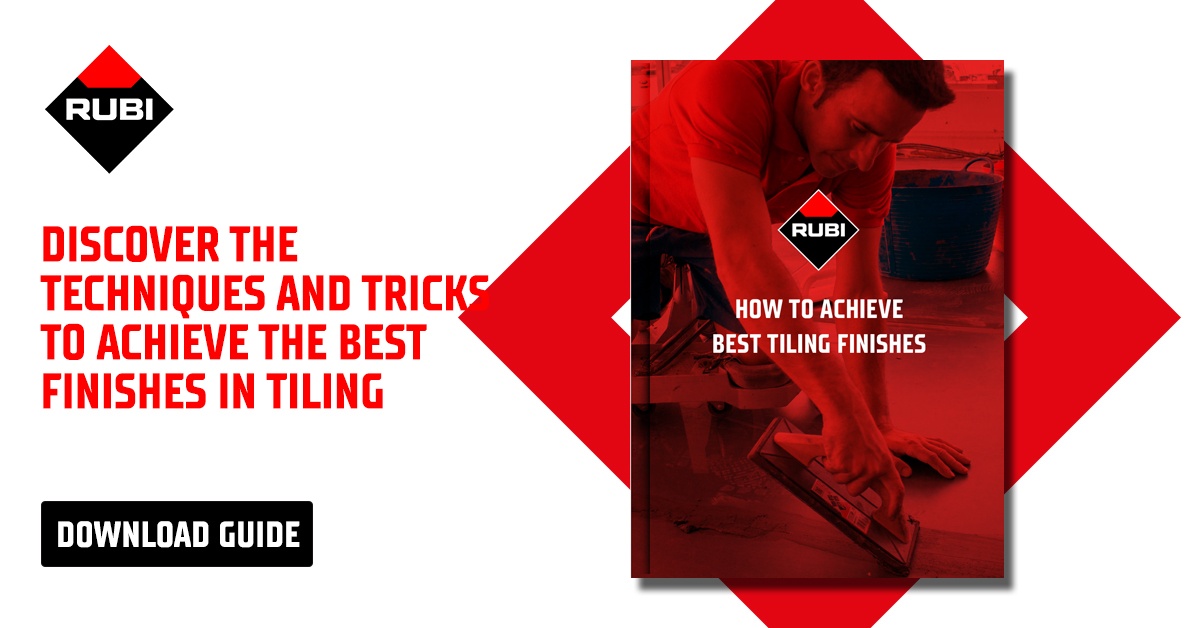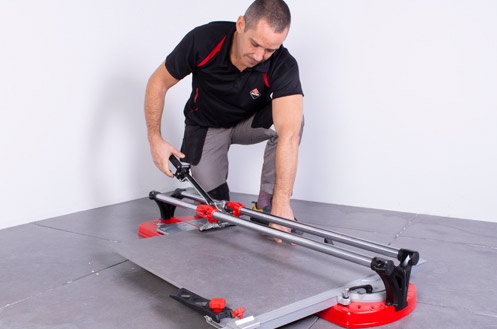Tiles constantly evolve, and installers often face cutting problems when working with increasingly difficult-to-cut materials. Fortunately, just as tiles evolve, so do cutting tools, including scoring wheels. Knowing how to tile and get a successful cut of new formats and thicknesses is an essential skill. In addition to having the appropriate ceramic cutter, it is essential to use the correct scoring wheel.
In this blog, we discuss how to choose scoring wheels, as well as scoring techniques for different tile types.

How to improve the finish
The scoring technique will depend on the type of tile and, above all, its finish. Our goal is always to achieve the best quality cut.
For ceramics with smooth glazes and/or polished porcelain, the incision must be clean and as delicate as possible (avoiding damage to the glaze). Scoring wheels of 6 and 8 mm make a quick, fine incision with the necessary depth to obtain clean cuts.

The most problematic materials are usually the rough ones (the greater the roughness, the greater the difficulty). Scoring these textures can result in a score line that isn’t perfectly straight.
With most rough tiles, we will be forced to apply a little more pressure. Be careful as to not apply too much pressure though. For best results it is recommended to start your score at the bottom of the tile. This is the point furthest away from the measuring bar on the tile cutter.

Place the scoring wheel roughly 1cm from the end of the tile, and score backwards. You can do this once or twice. Now we can score forward along the full length of the tile. Once you are at the top of the tile, go back and score the last 1 – 2 cm of tile again. This ensures a precise score line for the tile to break along.
The truth is that, when the piece requires it, we should not be afraid to score the tile 3 or 4 times, as this ensures the piece breaks where we need it, without risk of wastage.
We must not forget to secure the entry and exit of the piece, to ensure a straight cut without deviations at the ends, especially in hard materials like porcelain.
Types of Scoring Wheels and Their Uses
There is a general rule to follow when it comes to scoring wheel sizes. 6 and 10mm will be better for ceramic tiles, while 8 and 18 are better for porcelain tiles. When it comes to 22mm scoring wheels, these are best for extremely rough surfaces which you would normally find on porcelain tiles, but it can also be used to cut tough ceramic tiles.




Hi there I have a ruby tile cutter which is around 15 years old and I would like to change the scoring wheel, I’m planning to lay porcelain floor tiles and the scoring wheel that I have now is around six millimeters which I suggested for ceramic wall tiles
MUY BUENOS DIAS ESTOY RESTAURANDO UNA MAQUINA RUBI PARA CORTAR GRANITOS Y MARMOLES QUIERO SABER SI PUEDO CONSEGUIR EN EL MERCADO O ALGUN DISTRIBUIDOR LAS RUEDAS QUE DESPLAZAN LA BASE DE MOTOR SOBRE LAL GUIA CALIBRADA,… AGRADECIDO DE ANTEMANO
Hola, Gerardo: ¡Gracias por tu mensaje! Si nos escribes desde España, por favor, escribe un email a marketing.spain@rubi.com indicándonos desde dónde nos escribes, por favor. ¡Estaremos encantados de atender tu petición!